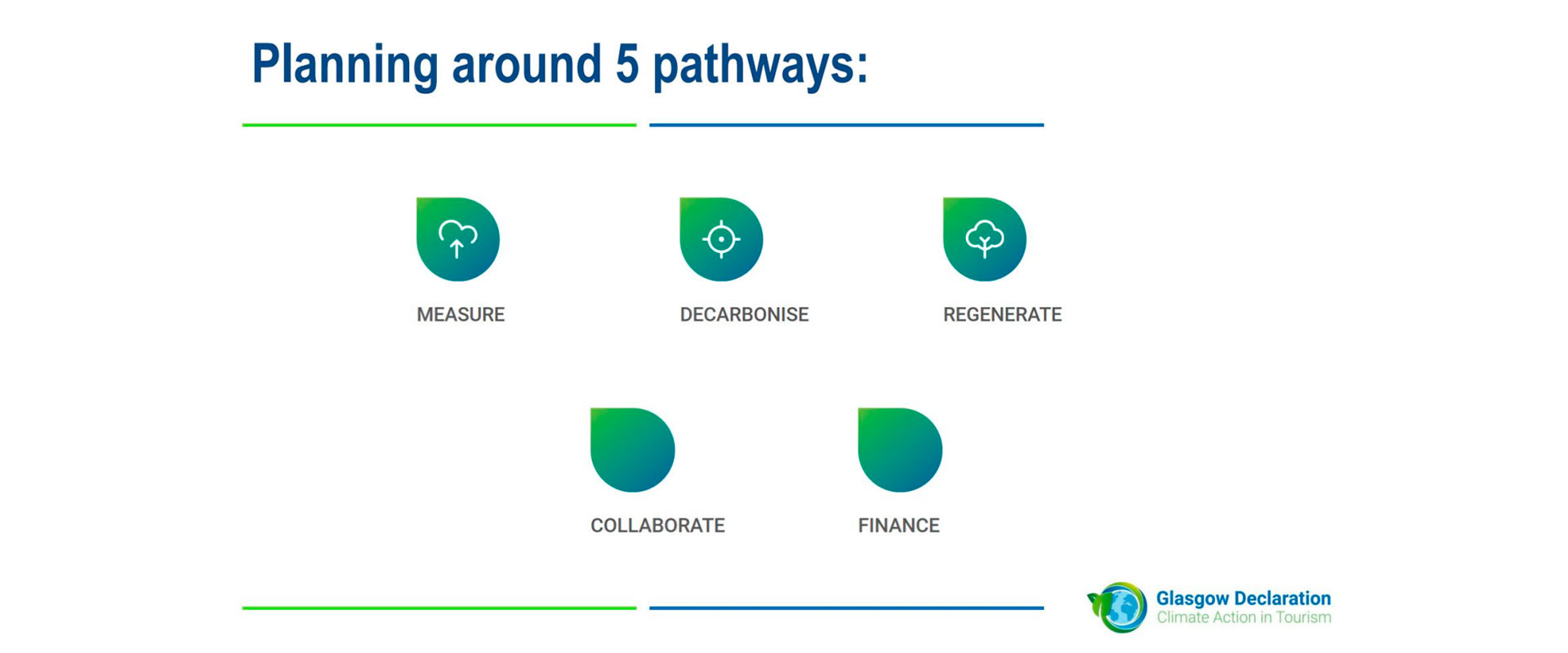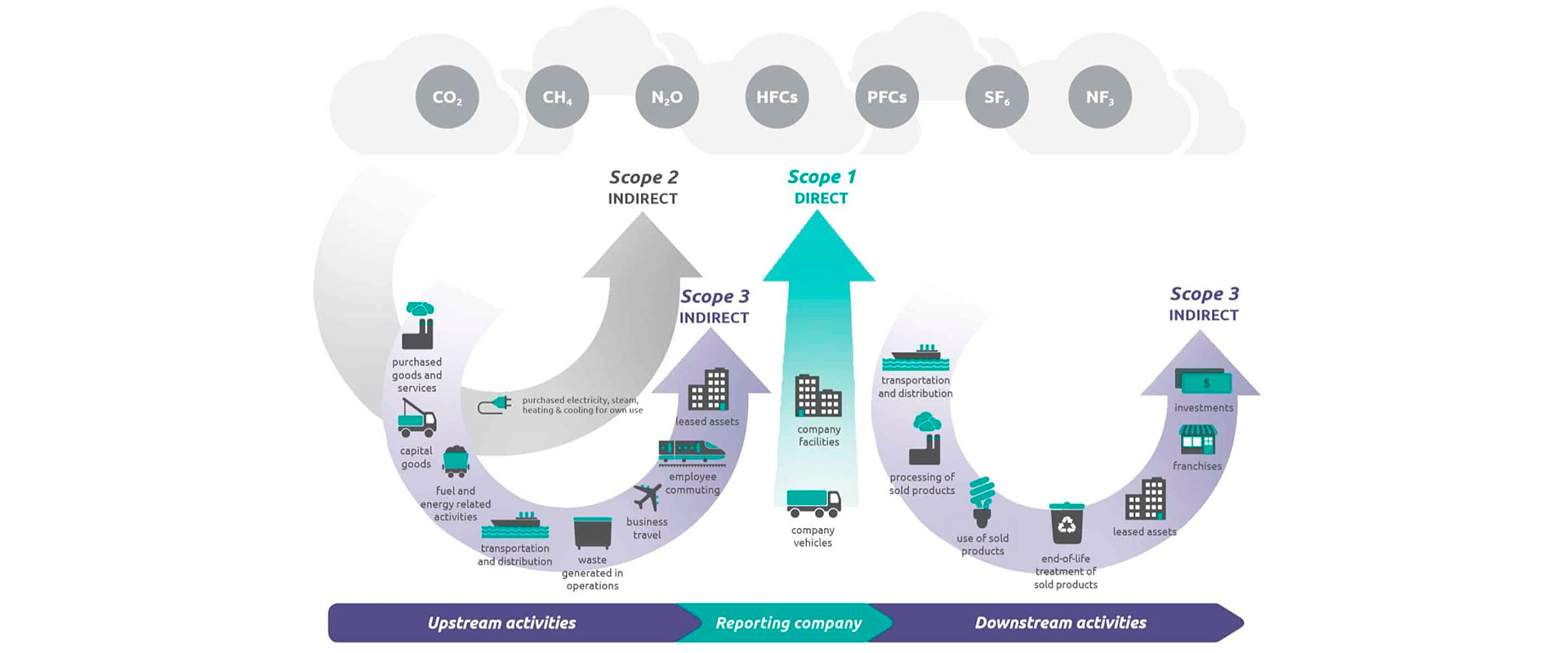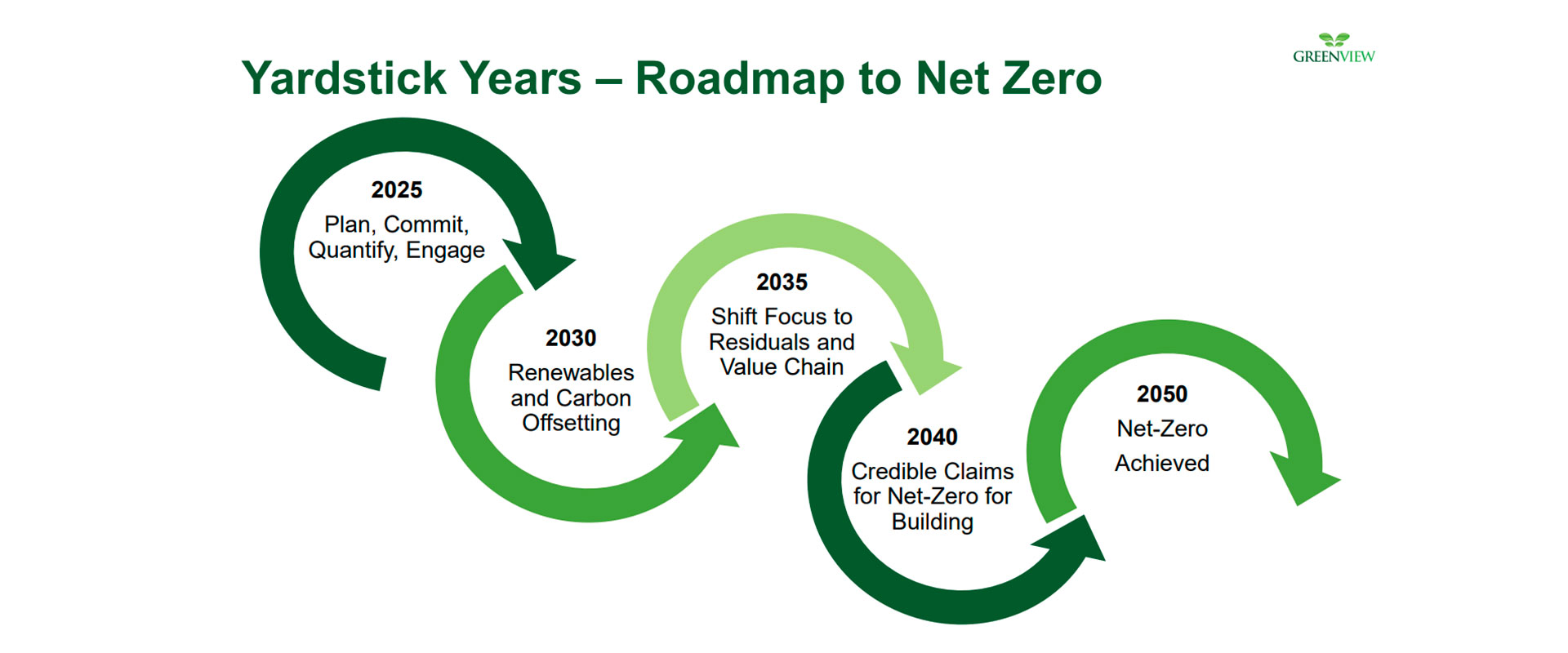 Credit: Arnaud Mesureur / Unsplash
Credit: Arnaud Mesureur / UnsplashSetting a Net Zero Pathway for Hotels
Aiming to accelerate the hotel market’s move towards a more sustainable and impactful future, the Glasgow Declaration on Climate Action on Tourism has been an urgent turning point. Stakeholders in the sector will have to execute solid climate action plans, aligned with shared pathways across the industry. Signatories are committing to act immediately in order to cut global tourism emissions by at least 50% for the next decade, with the goal of reaching net-zero as soon as possible before 2050.
On February 2, 2022, during the GRI Global Committee’s first session on Sustainable Hospitality (Net Zero Hotel: Pathway & Methodology to 2050), our Special Guests Jeremy Smith (Tourism Declares) and Olivia Ruggles-Brise (Greenview), together with our Board and Committee Members, discussed strategic approaches and concrete methodologies to meet sustainable KPIs.
*Disclaimer: While this review highlights the most relevant topics under discussion, it does not contemplate the full discussion between the Board and all Members. In addition, committee sessions also dedicate time for networking.
Important Takeaways:
-
Tourism Declares A Climate Emergency was launched in 2019. Commitments were to publish a climate action plan.
-
A common alignment and coordination in the tourism business is a major focus. 5 pathways may align companies’ action plans.
-
Greenview's Net Zero Methodology for Hotels aims to define net-zero strategies for the broader benefit of the industry.
-
The Methodology is able to identify the sources of emissions and classify them.
- The initiative set out a framework containing 4 main considerations when setting a net pathway according to The Glasgow Declaration.
“Tourism Declares a Climate Emergency”: alignments that help hotels to target net-zero as soon as possible
Jeremy Smith, on sharing how Tourism Declares a Climate Emergency was born, reminded us about the recent Cyclone Kenneth (2019), which crossed the Quirimbas Archipelago, Mozambique. The large air mass devastated an entire region, including a renowned award-winning hotel in which Jeremy had great experiences a decade before. Tourism Declares was then launched as an initiative gathering 14 founder signatories, tour operators, and other organizations from across the world coming together and declaring a climate emergency.
The purpose of the initiative was to foment reflection about tourism and its urgent need to respond and adapt to climate change. A few years earlier, tourism climate action appeared to be fragmented and not science-based. In addition, the sector was struggling to look outside the industry and to analyze how a global alignment could be achieved.
“We weren't really talking to one another and we also have a tendency to work in silos.”
Commitments were to publish a climate action plan that would be well-rounded in the terms of climate, science, and knowledge-sharing practice. Therefore, a major focus has been to align actions as the tourism business, by its nature, is disparate, including different destinations in different ecosystems. While gathering efforts to create a collaborative spirit that shares good practices and solutions, Tourism Declares came up with 5 pathways to align companies’ climate action plans.
 5 pathways © One Planet network
5 pathways © One Planet network
Measure
Measure and disclose all travel and tourism-related emissions. Ensure our methodologies and tools are aligned to UNFCCC-relevant guidelines on measurement, reporting, and verification, and that they are transparent and accessible.
Decarbonise
Set and deliver targets aligned with climate science to accelerate tourism’s decarbonization. This includes transport, infrastructure, accommodation, activities, food & drink, and waste management. While offsetting may have a subsidiary role, it must be complementary to real reductions.
Regenerate
Restore and protect ecosystems, supporting nature’s ability to draw down carbon, as well as safeguarding biodiversity, food security, and water supply. As much of tourism is based in regions most immediately vulnerable to the impacts of climate change, ensure the sector can support affected and at-risk communities in resilience building, adaptation, and disaster response. Help visitors and host communities experience better balance with nature.
Collaborate
Share evidence of risks and solutions with all stakeholders and our guests, and work together to ensure our plans are as effective and coordinated as possible. Strengthen governance and capacity for action at all levels, including national and sub-national authorities, civil society, large companies, and SMEs, vulnerable groups, local communities and visitors.
Finance
Ensure organisational resources and capacity are sufficient to meet objectives set out in climate plans, including the financing of training, research and implementation of effective fiscal and policy tools where appropriate to accelerate transition.
Targeting those 5 pathways altogether with practical implementations may organize the sector towards sustainable global hospitality. Looking now at the COP27, the goal will be to have a reporting mechanism in place on the One Planet Network website by November. It will transparently share further steps on climate action plans, as well as initiatives that put together groups, economic players, developers, and scientists.
Greenview and the Net Zero Methodology for hotels
First launched in December 2021, as part of the Glasgow Declaration at COP26, Greenview's Net Zero Methodology for Hotels was briefly introduced by Olivia Ruggles-Brise, Director at Greenview.
The project aims to define net-zero for the broader benefit of the hotel, travel, and tourism industry, with a methodology on how to reach net-zero by 2050. It was developed in a joint initiative between Greenview, Tourism Declares, the Pacific Asia Travel Association (PATA), Sustainable Hospitality Alliance, and the World Travel & Tourism Council (WTTC).
The initiative presents itself as an opportunity for leading players to explore some key issues concerning different ownership, business models, and other variants that might influence one's ability when setting a commitment and pathway.
Another insight of the Methodology is to identify the sources of emissions and classify them. Olivia was keen to reinforce Committee Members and Guests about concepts concerning gas emissions, especially the three main scopes defined by the GHG Protocol Corporate Standard.

(Source: https://www.compareyourfootprint.com/difference-scope-1-2-3-emissions/)
Scope 1 – All Direct Emissions from the activities of an organization or under their control. Including fuel combustion on-site such as gas boilers, fleet vehicles, and air-conditioning leaks.
Scope 2 – Indirect Emissions from electricity purchased and used by the organization. Emissions are created during the production of the energy and eventually used by the organization.
Scope 3 – All Other Indirect Emissions from activities of the organization, occurring from sources that they do not own or control. These are usually the greatest share of the carbon footprint, covering emissions associated with business travel, procurement, waste, and water.
“How do we link different entities with different emissions sources? And who might be responsible for what?”
The document classifies sources of emission as very high, high, medium, and low, and then guides each real estate player accordingly, by analyzing how managers and investors set baseline and targets, and how they change portfolios.

Constructing a pathway – alternatives & solutions
Finally, the Methodology sets out a framework containing 4 main considerations. It encourages all stakeholders to use those when setting their net pathway according to The Glasgow Declaration.
Milestone Categories
Defining different emission sources and setting reduction pathways against each one of those.
Equity Considerations
When purchasing renewables, consider different geographies, the mobility of socio-economic contexts, and governments, so that to set a realistic pathway.
Performance versus engagement targets
Not just about what a company can achieve, but how leaders can encourage and engage communities.
Yardstick Years – a Roadmap to Net Zero
Looking from an industry perspective, breaking down the 2050 Net Zero target into manageable portions based on decarbonization approach and science-based targets, would be the right way to go.
 Yardstick Years © Greenview
Yardstick Years © Greenview
The hotel industry has been facing many hurdles in achieving green effective improvements globally, such as disparate business and ownership models, and lack of data. Setting our first GRI Global Committee’s session on Sustainable Hospitality with key people directly involved in building global sustainable solutions was certainly an important step to kick off further discussions on upcoming sustainable trends in the sector.
Session Highlights
Watch the full discussion here.
Not a GRI Club Member yet?
Explore more: griclub.org/experience